A 5% market share in the next couple of years – that’s what Renault India is aggressively aiming for. And they’ve just got the perfect vehicle to take them there, the Kwid. With introductory prices starting from as low as INR 2,56,968, the Renault Kwid is shaping up to be the ultimate budget car slayer, a game-changer that’ll eventually see Renault Nissan’s 4.8 million unit strong plant in Chennai work at full force, and eventually feed their dwindling Indian coffers.
The Renault Kwid (or KWID) is a global car, based on a global platform. Called the CMF-A (Common Module Family – Affordable) platform, it offers extreme versatility to automotive manufacturing by coalescing five separate modules, apart from bringing down individual product investments significantly. For example, CMF-A can spawn a variety of body styles, including a sedan, MPV, SUV or even a pick-up truck.
The Kwid will be the first Renault-Nissan Alliance model to use the CMF-A platform, and will be manufactured in Oragadam (Tamil Nadu) with a high localization content of 98, while 80% of the engineering and development has been undertaken by Renault’s Indian engineers. It will also be exported to markets like Brazil soon, while CMF-A’s future applications could come from Samsung in South Korea and Lada in Russia.
Ever since it has been revealed, the Kwid has been a string of superlatives, proclaiming it to offer the best-in-class everything. Is all of that true? We head to Goa to find out.
Images : Chirag Mondal
Style
Disclaimer: The term “SUV-inspired” is going to be abused in this description
Circa 2008. One of the very first sketches penned at Renault’s design studio in Mumbai carried an idea – a compact hatchback with “SUV-inspired” styling. Gerard Detourbet, present Global Vice President of the Alliance A-Segment Development Unit, and also the man behind the Kwid, says that the micro-SUV in that sketch hasn’t changed much from what we see today.
We know that a lot has changed since then, because if names are anything to go by, this is the Kwid Concept which was showcased at the 2014 Auto Expo – an eclectic, broad shouldered crossover with McLaren F1-style butterfly doors and a it’s own drone which could be flown manually from a tablet inside the car. Well, things have toned down significantly haven’t they? Well, no complaints here, because, toned down or not, if it’s the Maruti Alto 800 to the left and the Hyundai Eon to the right, it’s the new Kwid’s door I’ll be knocking.
The Kwid’s front end has a lot of visual depth to it, giving off a bold, three-dimensional appearance – Renault likes to call it “muscular”. The heavily contoured bumper is contrasted well with acres of negative spacing, which include the large and deep fog lamp enclosures hosting round lamps, along with a wide air dam.
The large, structured grille eats into the bumper, and comprises of twin slats with some detailing to them. The large diamond shaped Renault logo sits in the grille’s midst, and cuts a small, trapezoidal chip in the bonnet.
The grille is flanked by headlamps with C-shaped chrome trims embedded inside. The blacked out bezels make the chrome trims stand out. The lower half of the front bumper gets black cladding, which encompass the air dam and the skid plate below.
The sides are where the “SUV-inspired” touches are most prominent. To start off, the high riding stance is achieved by a ground clearance of 180 mm, which makes the Kwid stand 10 mm higher off the ground than immediate competition.
The wheels are pushed to the extreme corners of the vehicle, allowing for shorter overhangs and a long wheelbase of 2422 mm, which, apart from being the longest in the segment, accounts for more interior space – more on the latter, later. The glasshouse receives a subtle kink towards the rear, while blacked-out B-pillars look up market.
The sides are well sculpted, with broad, muscled up fenders that accentuate the width of the vehicle, adding to the “SUV-inspired” propaganda. The wheel arches are mildly squared off, and taped with cladding that make the Kwid look like it’d eat a compact SUV for breakfast. Further accentuating the SUV experience are the “side finishers” or some cladding for the doors.
The side indicators are neatly integrated into the front wheel arch, rather than making a hole in the bodywork, or sticking them on the door mirror caps. Speaking of arches, the ones on the Kwid are huge. They look hungry for more, especially with the standard (read skinny) 155/80 tires wrapped around 13-inch steel rims.
The rear end is highlighted by cute tail lamps, a roof mounted spoiler and of course, another “SUV-inspired” element – the lower bumper trim. It’s essentially a piece of cladding which engulfs the lower half of the bumper and has an integrated registration plate recess and a skid plate. The exhaust tip is hidden under the rear bumper for a cleaner look.
The Kwid is undoubtedly the most attractive vehicle in its class. With cars like the Hyundai Eon and Maruti Alto 800 as competitors; designs even their respective mothers won’t love, the Kwid needn’t had tried too hard, but it did. The “SUV-inspired” styling is a unique proposition, successfully executing a bigger car’s appearance in a much smaller and affordable package.
Renault will also provide six different kinds of customization packages for the Kwid, each of which will offer a slew of exterior and interior accessories for most Indian tastes – read detailed story regarding the customization options here. Initially, a choice of five color options will be available.
Similar details on the grille slats were previewed on the Lodgy Stepway Edition; can be had with chrome trimming as well.
A simple headlamp cluster; stylised nicely with a blacked out bezels that contrast sharply with the C-shaped chrome trims.
The large enclosures host the large fog lamps; can be had with chrome trim as well.
Neat : The front wheel arch cladding hosts the side indicator.
The manually adjustable mirrors are utilitarian; do not gel well with the contemporary design.
A single windscreen wiper has to suffice.
The tail lamps feature nothing special; yet look cute.
The “SUV-inspired” rear bumper trim also features an integrated skid plate.
155/80 footwear wrapped around 13-inch, three-lug steel rims is underwhelming compared to giant arch.
Interiors, features and space
Disclaimer: The term “class-leading” is going to be abused in this description
The interiors are roomy and spacious, and none of the claustrophobia felt in, say, the Alto is felt here. Furthermore, it doesn’t feel bare and built to a cost as well, with a proper roof lining, soft touch materials, complimented by up market appointments. The center console trimmed in classy piano black finish along with subtle chrome bordering. But what it hosts is more appealing – a seven-inch (18 cm) touch-screen equipped Media-Nav multimedia/navigation system; a feature unheard of in its class. For a budget car, the system works like a dream, and offers Bluetooth, iPhone and smart phone connectivity, along with navigation, USB charging, audio playback via Aux-in, pen drive and phone.
Touch sensitivity is on the firmer side, while the navigation system is great, offering 2D as well as 3D maps. That said, its mode of operations are nowhere as slick as the best in business, and finding a destination requires a little prodding. It even shows the number of satellites it’s receiving its feed from, along with their respective signal strength. You get keyless entry but a key ignition start, though a black, round patch on the dashboard may house the button start at a later stage or for the export model.
The dashboard design is clean and uncluttered, something, which Renault says opens up more storage spaces – the Kwid has as much as 22.4 litres of storage space, a class leading figure aided by not one or two, but three glove boxes decked over one another. Other knick-knacks can be stored in a couple of cubby holes; one below the center console and the other behind the hand brake lever. Storage wells in the front door pad easily swallow 1-litre bottles, while the floor board is integrated with two can holders.
The steering wheel deserves a special mention, sporting contours and piano black trim that befits cars far above its class. What’s more, it’s also trimmed in leather, at least on the top-end RXT variant that we drove. What lays beyond the steering wheel is also impressive – a fully digital instrument cluster with a large readout that shows speed, another feather to the class-leading cap; this one being a first in class. There’s also a fairly comprehensive trip computer and a gear shift indicator; all of the above putting even higher competition to shame.Below the Media-Nav system lie the front power window switches, along with a central locking button.
The front seats are basic, yet supportive, but could have done with a bit more bolstering, but that’s asking a bit too much, considering it’d eat into interior space. A front shoulder room of 1250 mm is worth praising, apart from, of course, class leading (Note : Upholstery shown in images above and below are a part of one of the six customization packs – more on that in a separate article).
The rear narrates a similar story, with the bench seat being supportive enough for its class, while room is indeed class leading. The Kwid offers 1231 mm of rear shoulder room and 116 mm of knee room, and even with the front seats pulled back, an average sized person can sustain a long jaunt without too much discomfort. Head room isn’t the best, but it’s just a small price to pay. Sitting three abreast is a bit of a squeeze though, but not particularly unsafe, as a lap belt for the middle occupant comes as standard.
The Kwid offers a class-leading 300 litres of boot space, which just decimates the competition, swallowing suitcases left, right and center. What’s more, the rear seats can be folded to unleash a cavernous 1,115 litres, enough for your carrying your mountain bikes, or whatever you’re up to these days.
The Media-Nav infotainment system showing Goa in 3D view; one of its many qualities.
The Kwid gets remote locking, but no key-less start.
The front power window switches share space with a central locking button, along with the standard hazard light switch; round black patch could host engine start button on export model.
Chrome trimmed rotary HVAC controls are amongst the many things that feel premium for a INR 4 lakh car.
Now that’s futuristic; digital readout is delightfully crisp and has a nice orange hue.
Rear room is adequate for its class; unless front seat is pulled all the way back.
These bins will swallow 1-litre bottles with ease.
Rear boot space increases to a cavernous 1,115 litres with the rear seats folded and parcel tray removed.
Engine & Performance
The Renault Kwid is powered by an all-new, BR-8, DOHC engine, all of 3 cylinders and displacing 799 cc. The relatively uncomplicated, compact engine, developed by Renault-Nissan’s technical centre at Chennai develops 54 PS at 5,678 rpm and maximum torque is rated at 72 Nm torque at 4,386 rpm; making it the most powerful vehicle in its class.
The Kwid will deliver as much as 25.17 kmpl, making it the country’s most fuel efficient petrol car. Crank up the Kwid, and the three-cylinder thrum and lumpy idle is unmistakable. NVH levels have been decently contained though, with the remotest of vibrations creeping in through the controls. The engine note makes its presence felt in the cabin though, but it has been subdued by a fair margin.
Performance is quite sprightly, as the Kwid weighs only 669 Kg, endowing it with a power to weight ratio of 85PS/ton. This has been achieved by optimizing the vehicle’s content, along with usage of more plastic parts in the engine, like the oil pan and upper cylinder head, which end up saving 1 Kg and 2 Kg respectively. Renault says robustness and safety haven’t been sacrificed at all, while the low weight is a key contributor the Kwid’s trophy winning fuel efficiency figure.
Power delivery is slightly jerky in the lower gears, but as speeds build up, things get smoother. In this type of a car, drivability matters more than outright performance, and in that aspect, the Kwid is pretty well sorted. The car doesn’t show reluctance in any gear, and can comfortably hold its own again like hearted competitors. However, an Alto might just feel like a more well oiled machine in this aspect.
If you want some pep though, you’d have to wring the three-pot motor all the way to glory, which will be aurally accompanied with a thrum that keeps increasing its crescendo till you shift up. It’s advisable to up shift sooner, rather than holding on to a gear longer to gain some velocity though. Mid-range is moderately peppy for a 0.8 litre motor, and the Kwid is actually a lot of fun to momentum drive.
Sprints in traffic are effortless, but it dies when keeping up with fast moving traffic, or on inclines, with one having to constantly work the five-speed transmission to keep the engine in its power band. The transmission in itself is a slight disappointment, as it is far from slick, resulting in slightly jagged shifts, especially if it’s cold. Initiating to back the Kwid also gets a little messy, as the mechanism to stick it into reverse isn’t exactly well resolved, and can result in sore fingers.
Ride and handling
The Kwid’s ride quality is amazingly supple for its stature, iterating the Duster’s feat. Potholes and irregular surfaces are taken on by a MacPherson setup with lower transverse links up front and a twist beam setup with coil springs at the back. The Kwid rides so comfortably that one is hard-pressed to think that this car weighs as much as the specifications suggest. It rides like a mini Duster, which is an excellent compliment.
The electric power steering was a slight disappointment according to me, and this is a strictly personal opinion. You see, the Kwid can be loosely termed as an evolution of cars like the Maruti Zen and the good old 800. What these cars offered was the joy of direct steering feel through an unadulterated, hydraulically assisted rack.
The Kwid, beautifully reinterpreting that theme in other areas, sadly, offers none of that lovable steering feedback. Instead it tries to emulate cars bigger than its size with an overly assisted steering rack. The ultra-lightness at low speeds felt like overkill, considering it’s a pint sized car. As speeds arose, the artificially induced feedback and vagueness at the center made me lament a bit. Though it weighs nicely up with speed, and is fairly accurate while negotiating switchbacks, small corrections needed to be made all the time.
It might be fit for its intended clientèle, but is a little killjoy for those looking for some genuine feedback. The beautiful steering wheel itself makes up for some of its mechanical coldness. Let’s come to the handling bit. This small Renault can tackle corners with much more grace than I expected it to be. Body roll is well contained, and you only notice some roll because the seats aren’t bolstered like a bigger car. It’s a very friendly handler, with predictable moves that encourage a little pushing.
The chassis is inherently well balanced, with only the skinny, squealing tires preventing it from being too adventurous. The light weight makes it very nimble as well, with the Kwid reacting instantly during sharp turn-ins. But push it hard, and it expectedly under steers, giving up whatever grip the skinny tires provided, and washing out to the outside of the corner.
The brakes are just about satisfactory, with discs up front and drums at the back. Hard braking under panic saw us just stopping short of rear ending a vehicle though. ABS isn’t even an option, while driver air-bag is optional even on the top end model. Don’t cry, because all these things aren’t mandatory in India, and even if good buddy Renault puts these safety nets as standard, be ready to pay well over the indicated price.
The Kwid’s dynamic character can be summed up as a beautiful ride and handling balance, let down by an overly assisted, vague steering feel.
Bottom-line
Priced between INR 2.57 – 3.53 lakh (ex-showroom Delhi), the Renualt Kwid, without a trace of doubt, is the best piece of kit one can buy for that money. Renault calls it a game changer and they couldn’t be more right, because the Kwid literally rewrites the rule book. It’s a product that trumps its competition over and out in all areas; be it styling, features, efficiency, or comfort.
Renault also promises the lowest cost of maintenance and spares, a 2 year/50,000 km warranty, along with free roadside assistance for 2 years, sweetening the deal further. I mean, seriously, what more do you want? A vague steering wheel and a slightly crude gearbox notwithstanding, the Kwid outclasses certain cars even beyond the Maruti Alto 800 and the Hyundai Eon 800.
A string of superlatives backed up by sheer facts does make the Kwid a very, very easy product to market. That said, Renault is taking on competition that are all established players in selling and servicing cars in India, manufacturers who know the tricks of the trade, who can even sell an average product to loyal buyers. Renault is just a one-hit wonder with very limited presence in the market as compared to Maruti and Hyundai, and they have to be wary of that fact.
Still, a total of 205 showrooms in India are planned by 2015. That, coupled with aggressive marketing and awareness programs will hopefully set the ball rolling, setting sights closer to that 5% market share. We wish them all the best, and will be closely following their journey closely.
STD : INR 2.56,968
RXE : INR 2,88,960
RXE (O) : INR 2,94,960
RXL : INR 3,11,664
RXT : INR 3,44,132
RXT (O) : INR 3,53,132
Renault Kwid Image Gallery

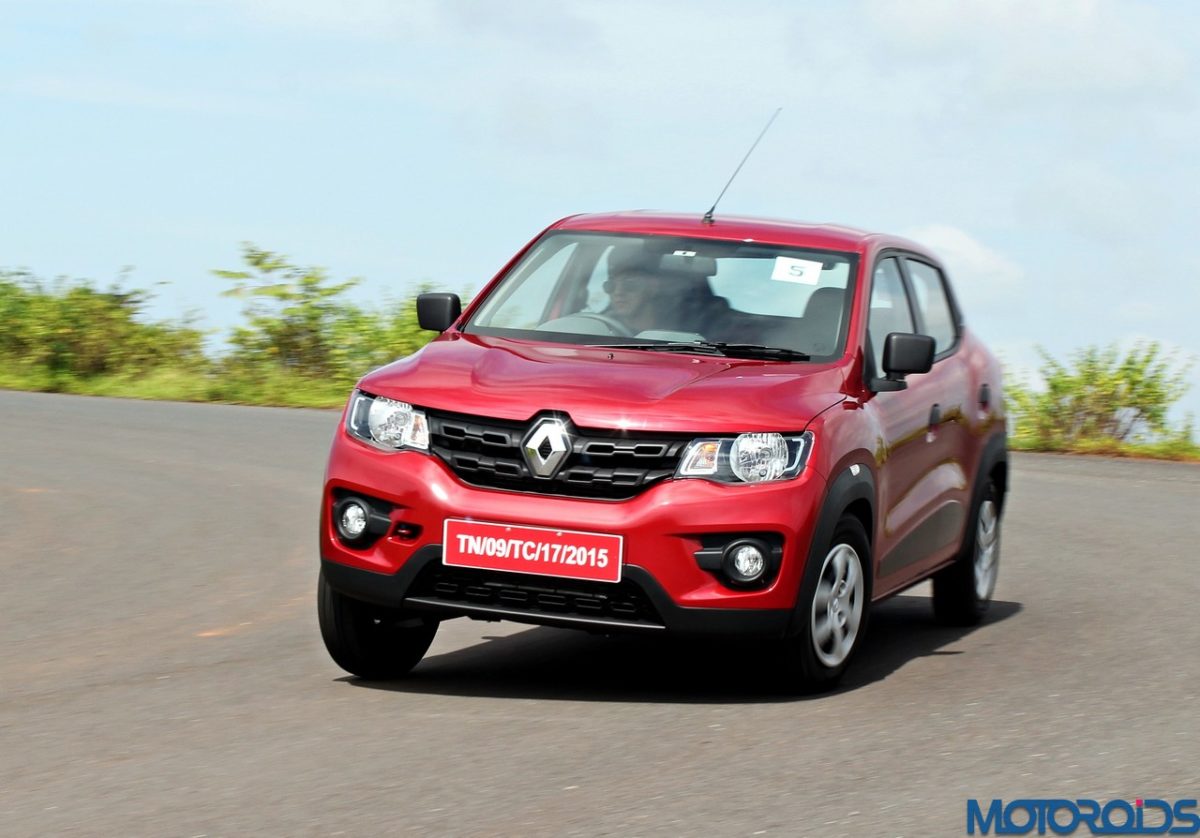
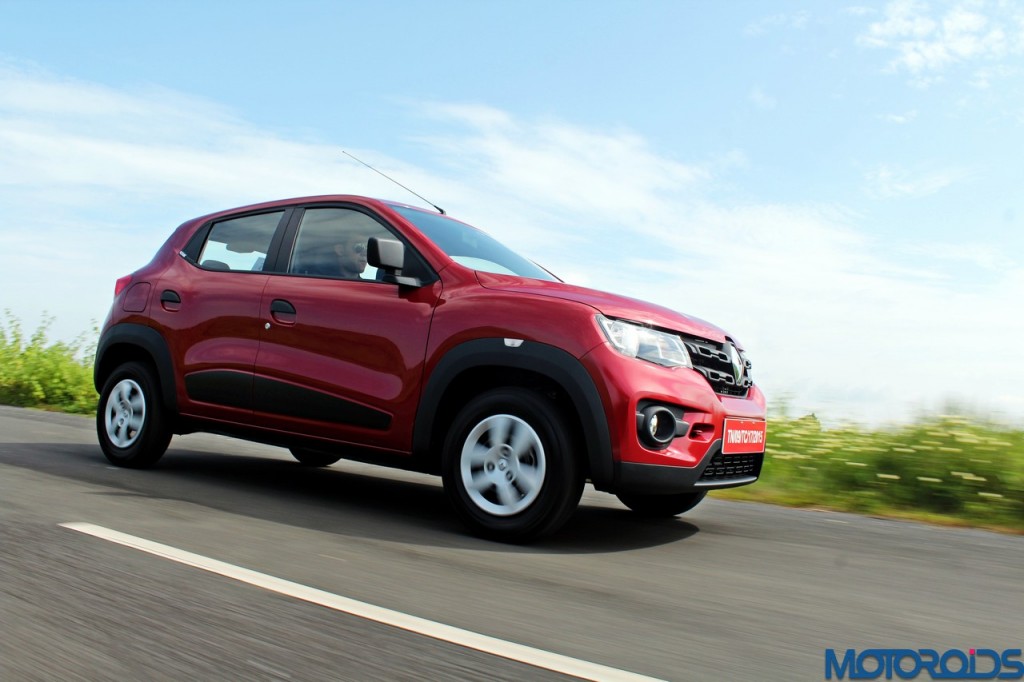
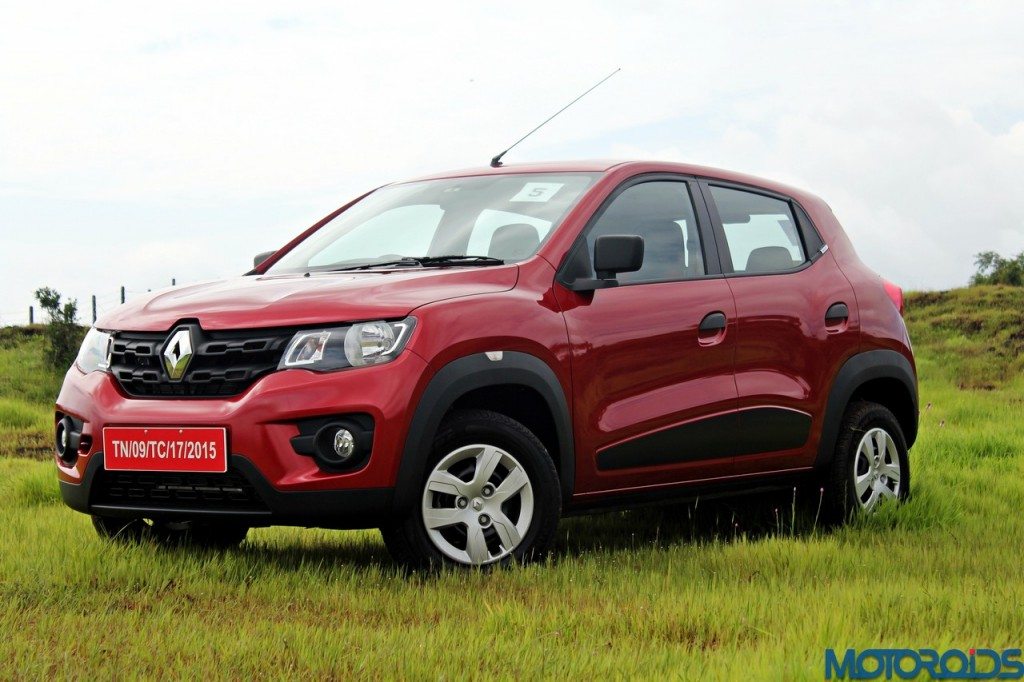
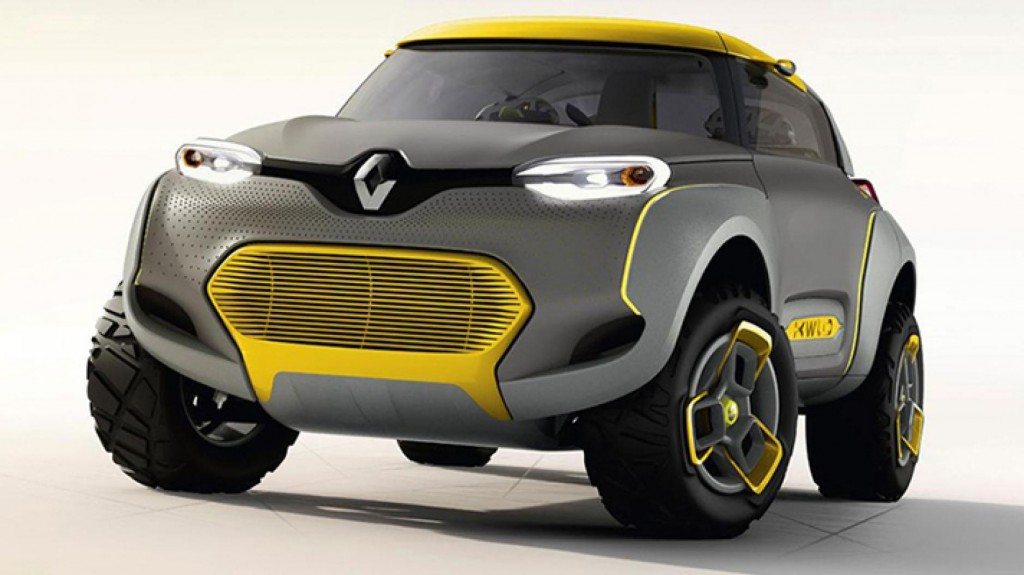
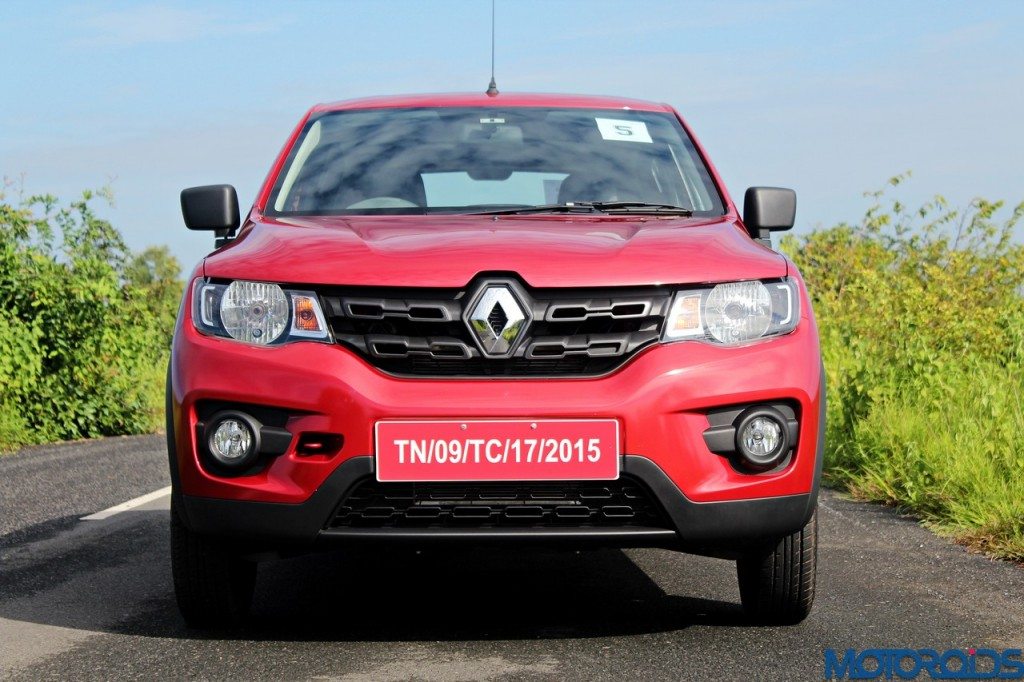
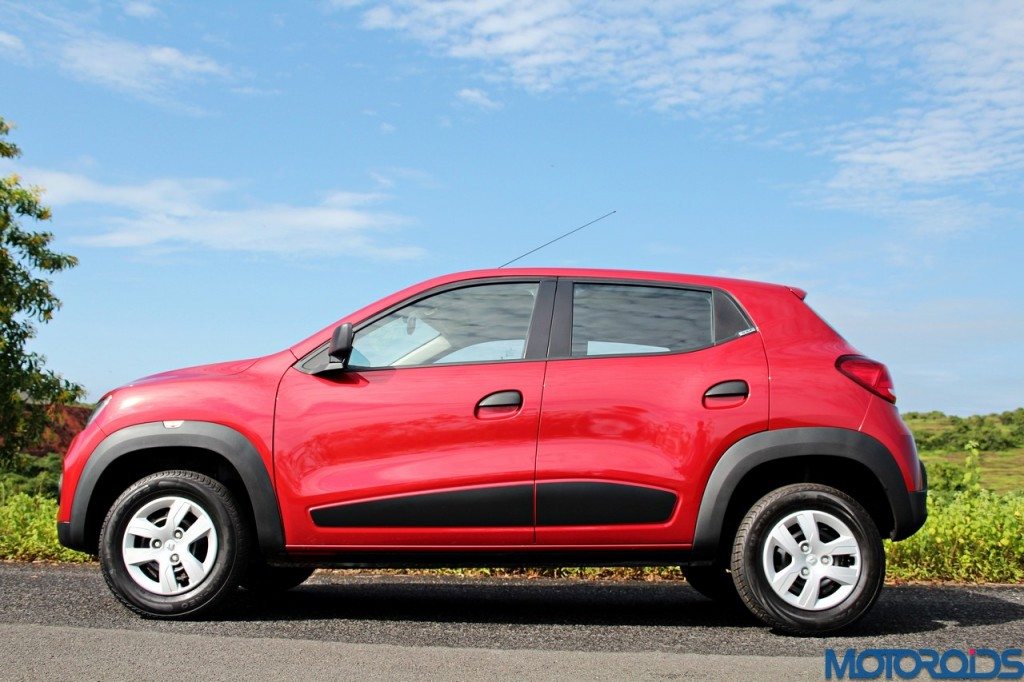
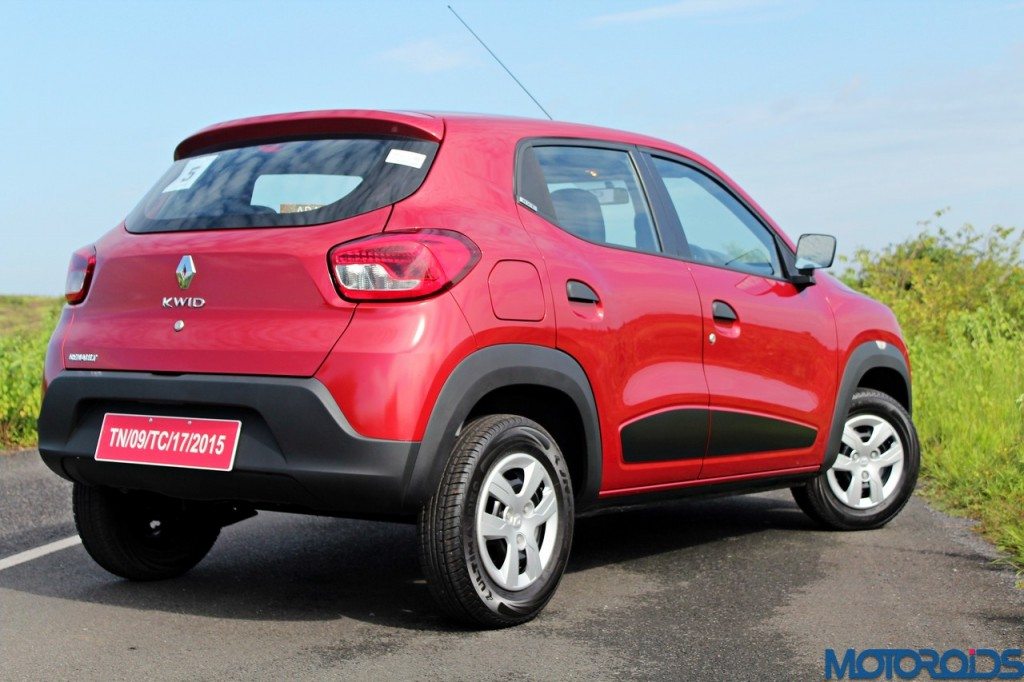
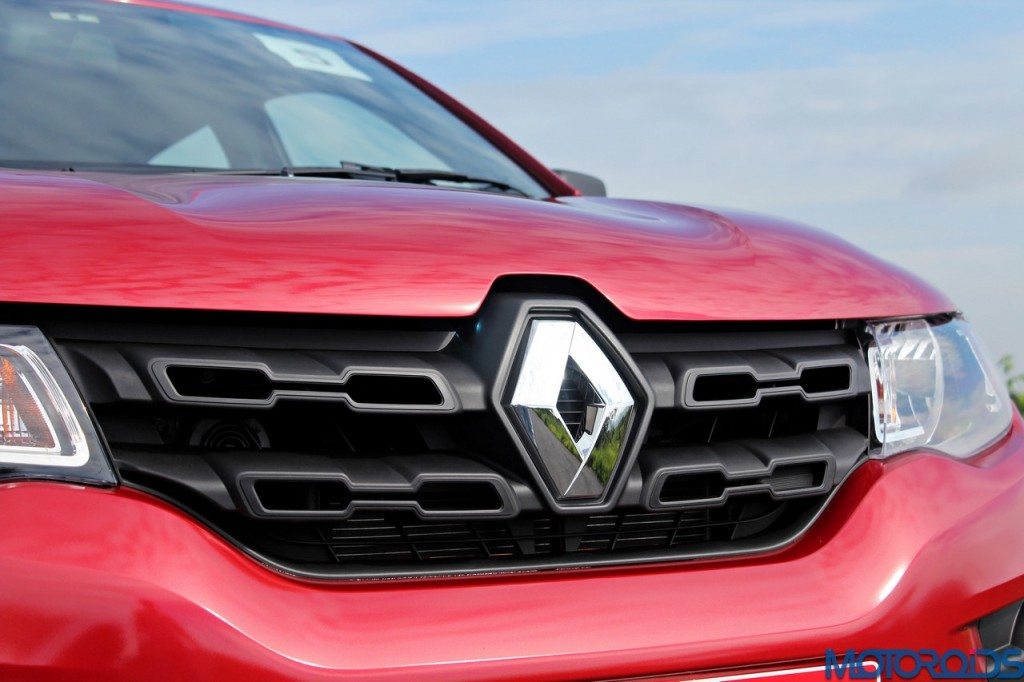
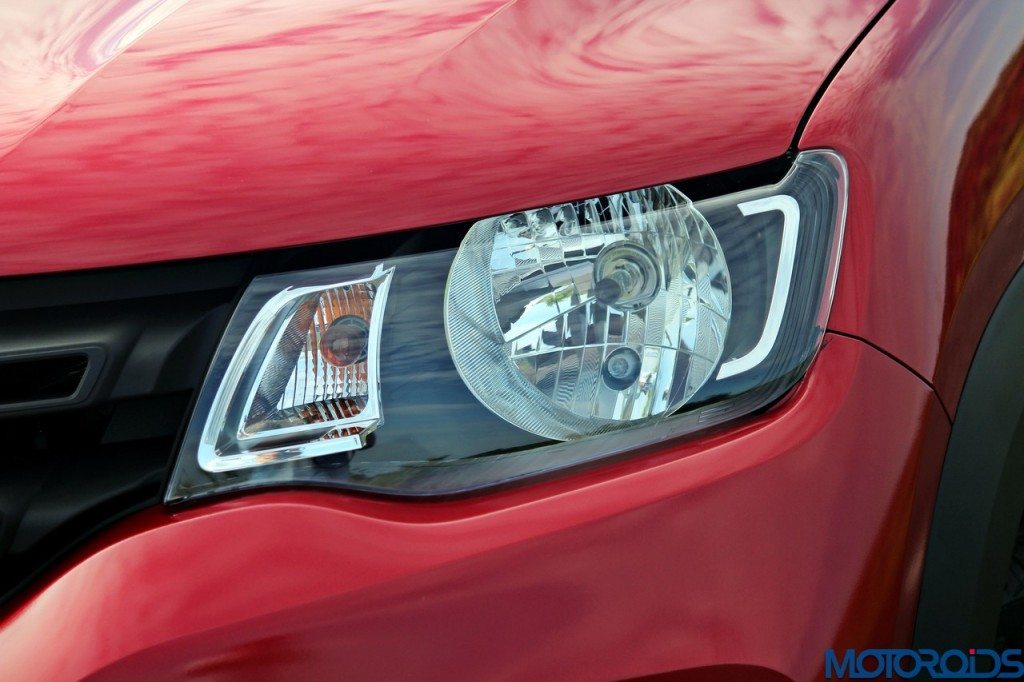
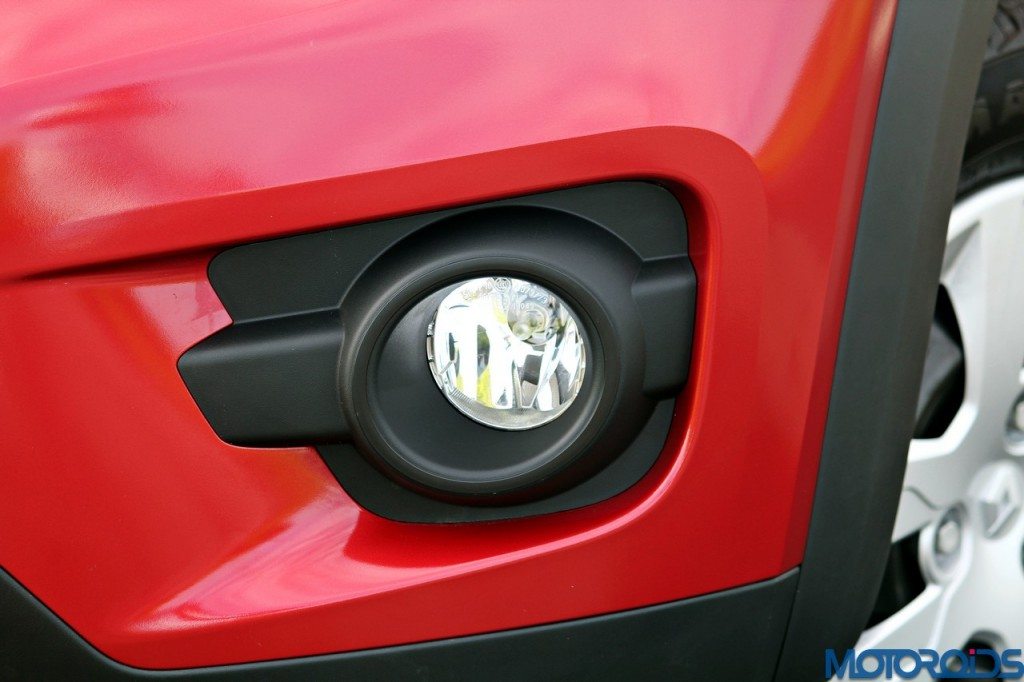
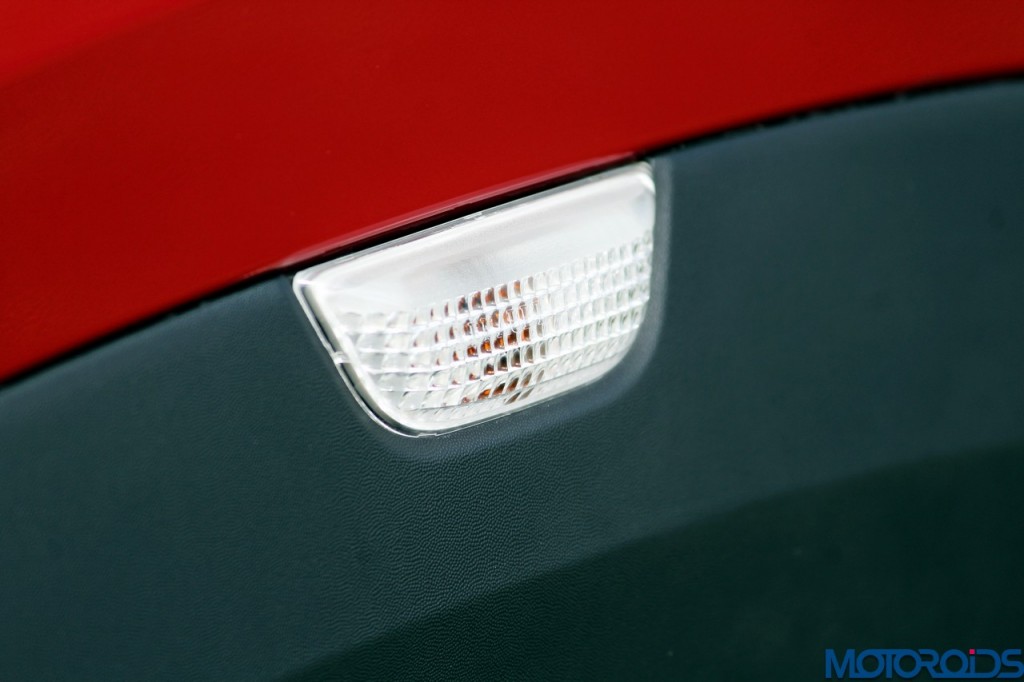
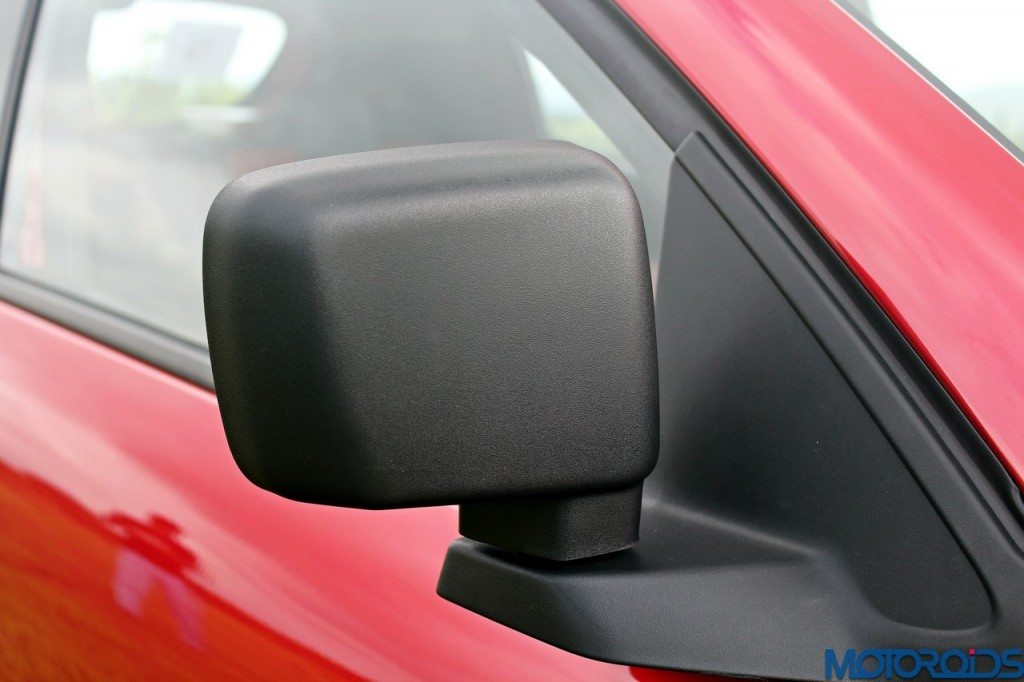
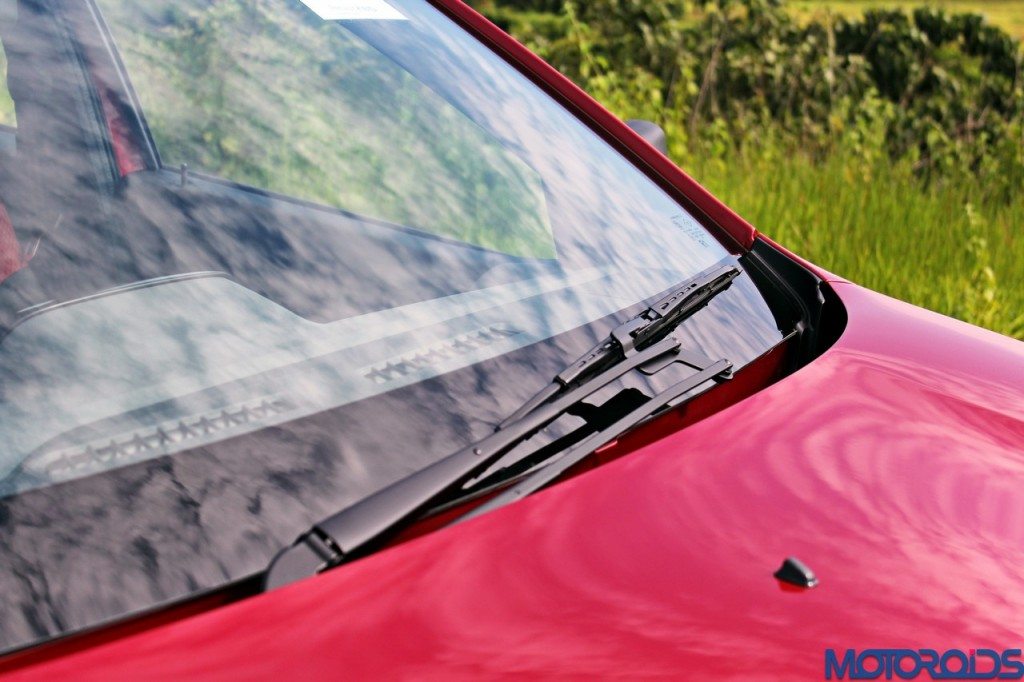
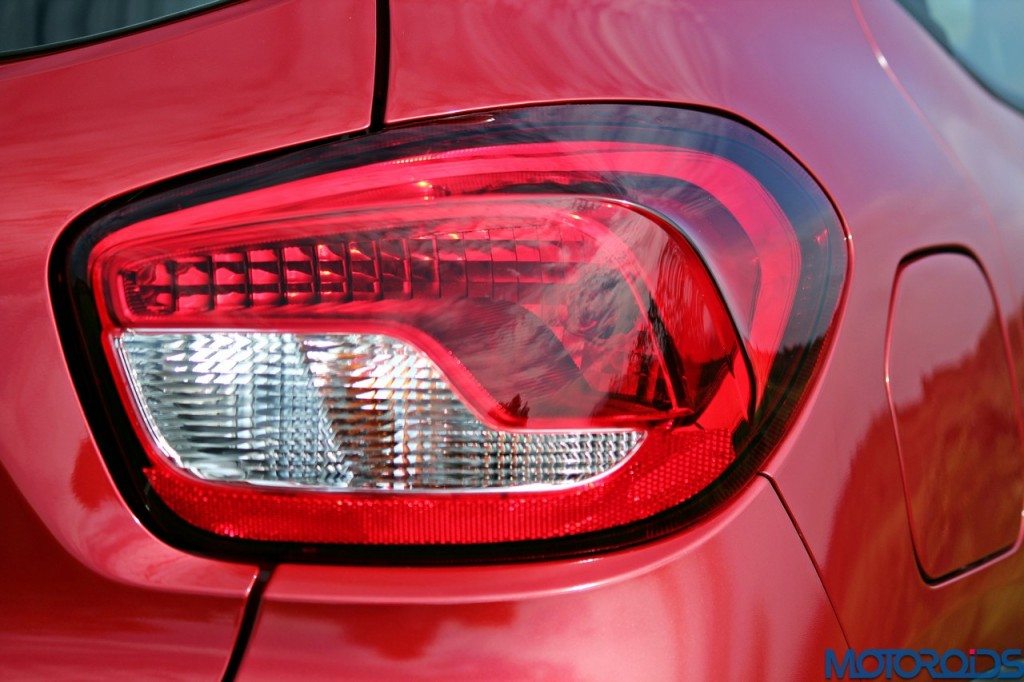
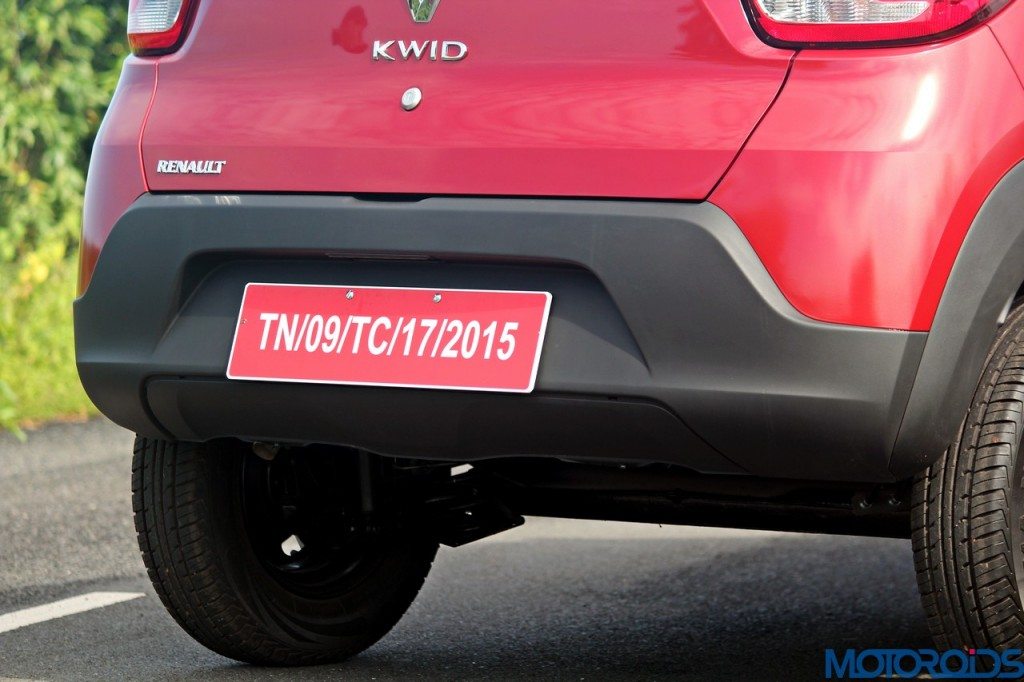

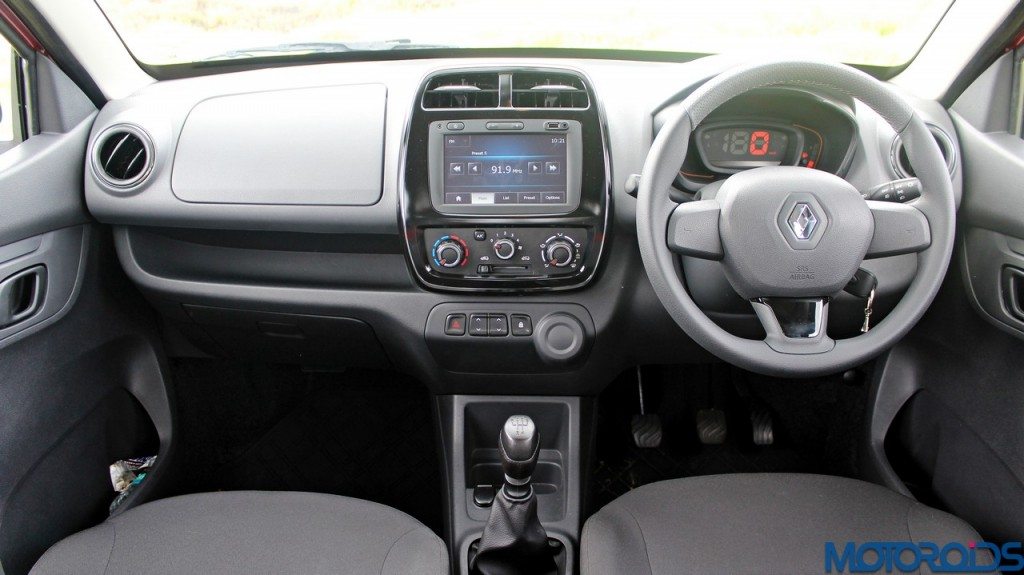
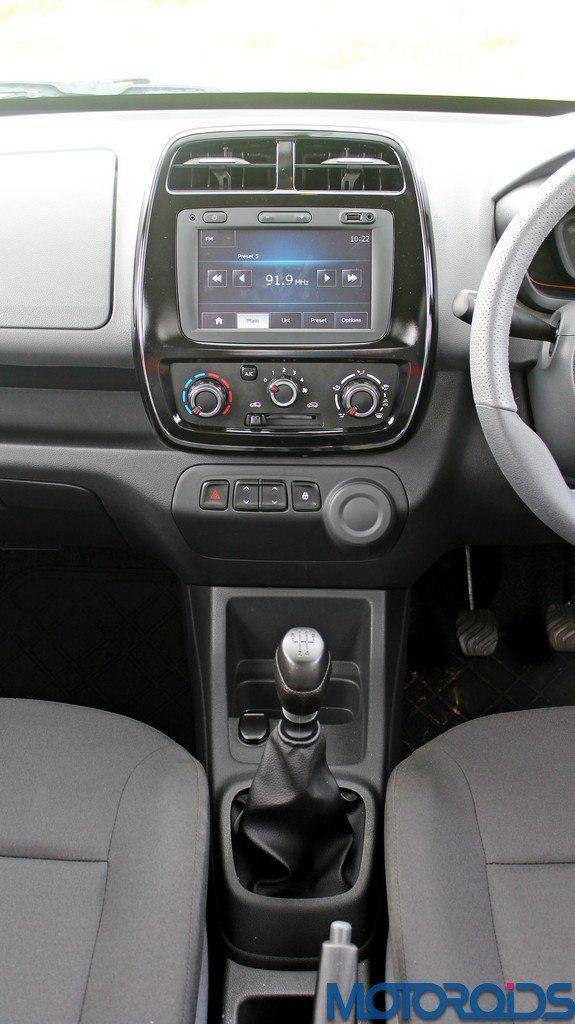
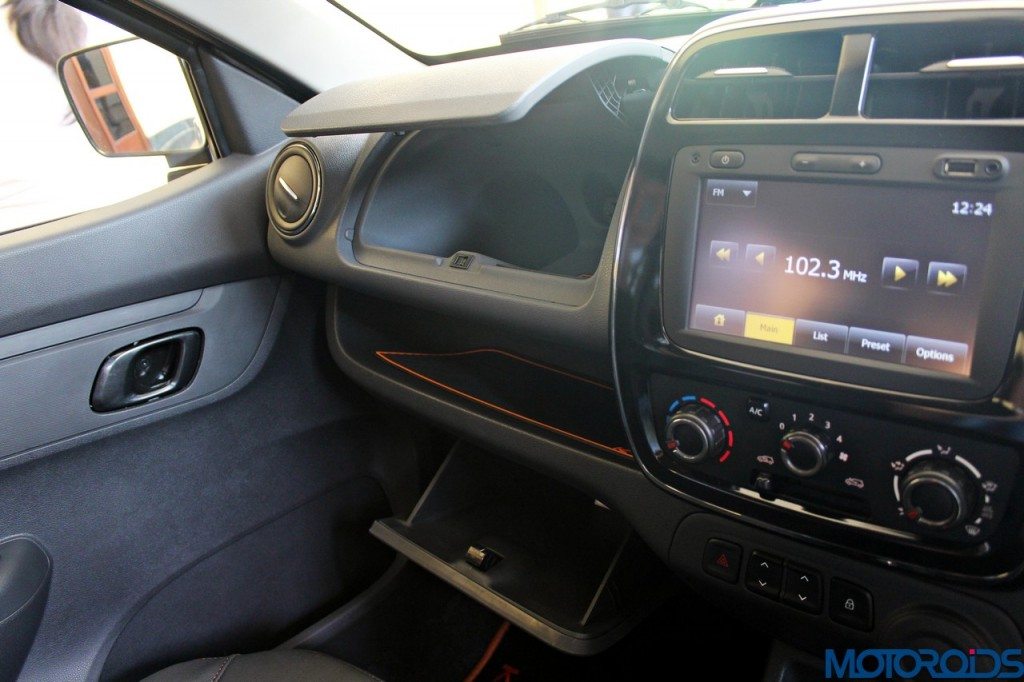
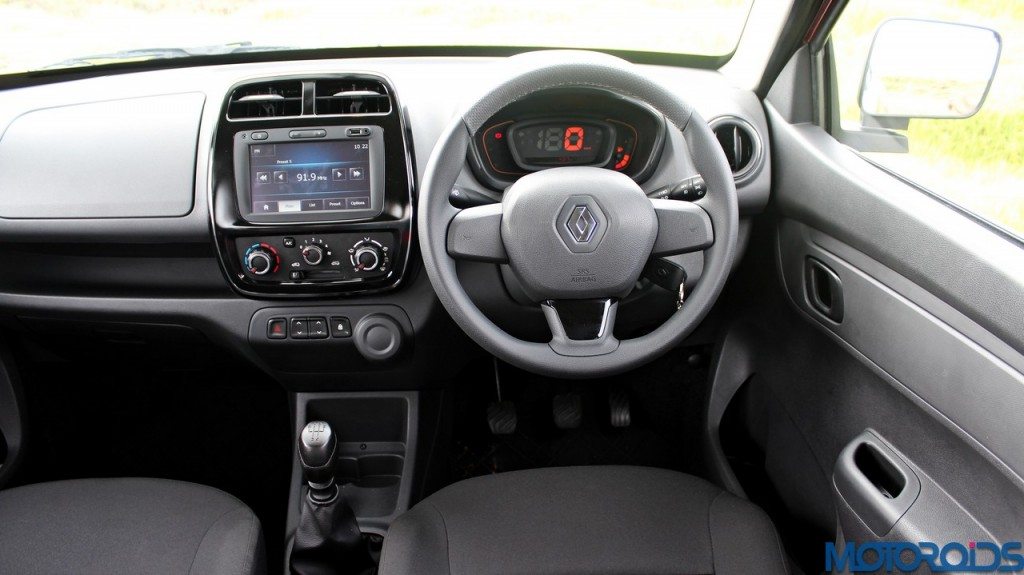
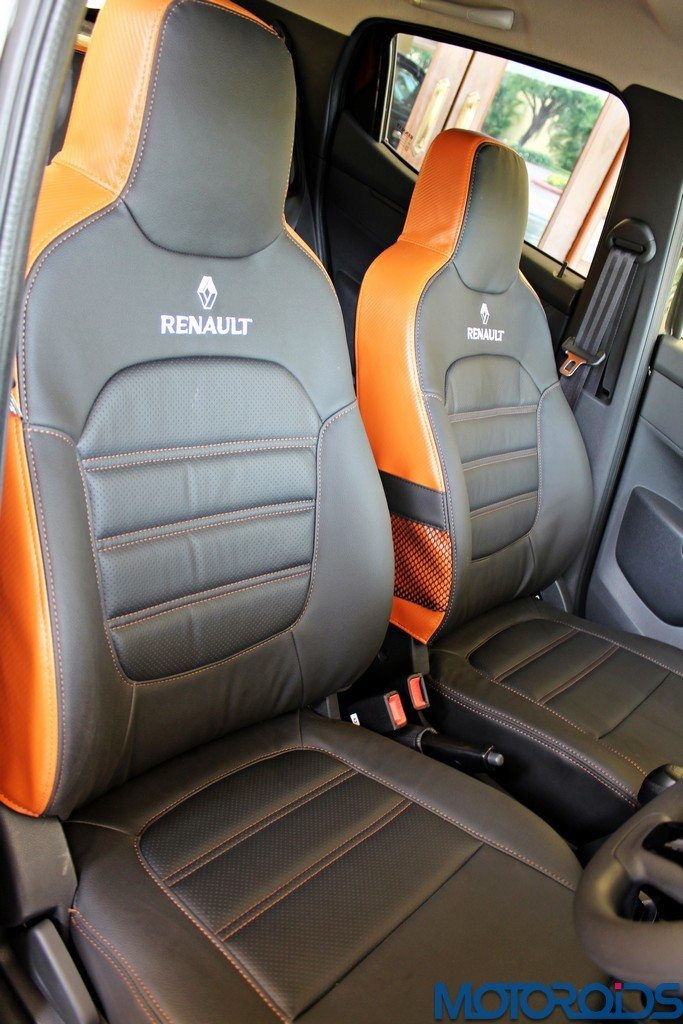
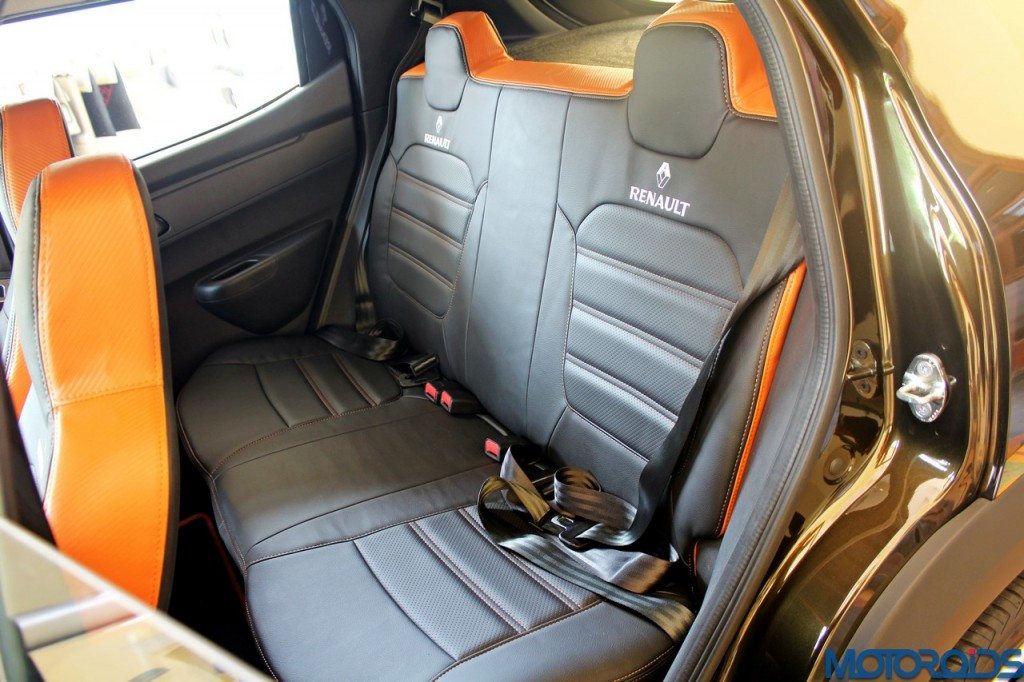
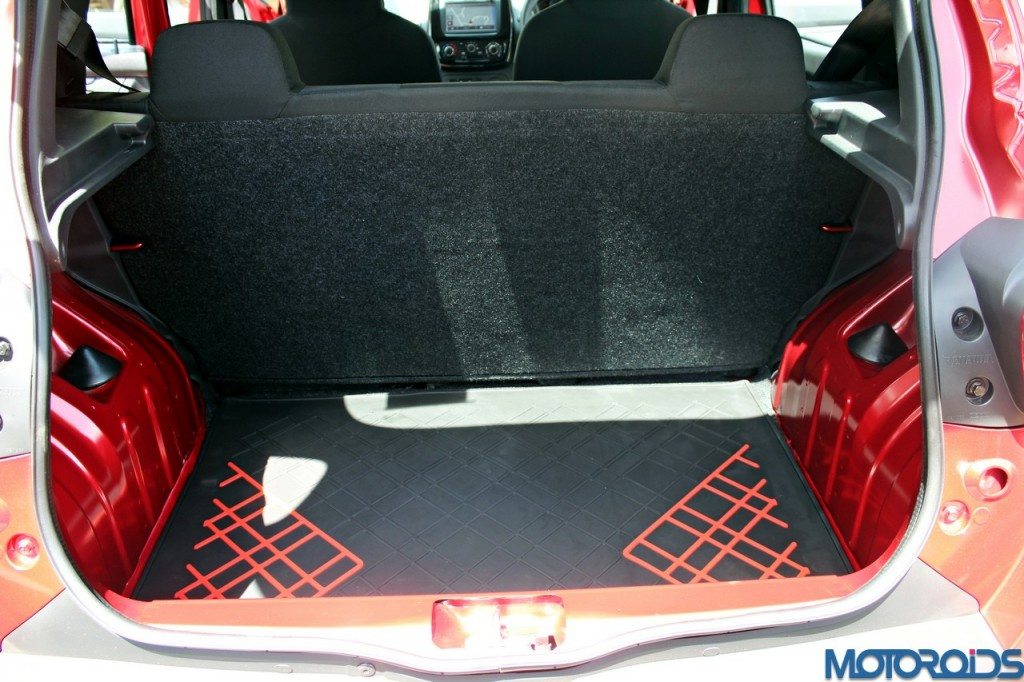
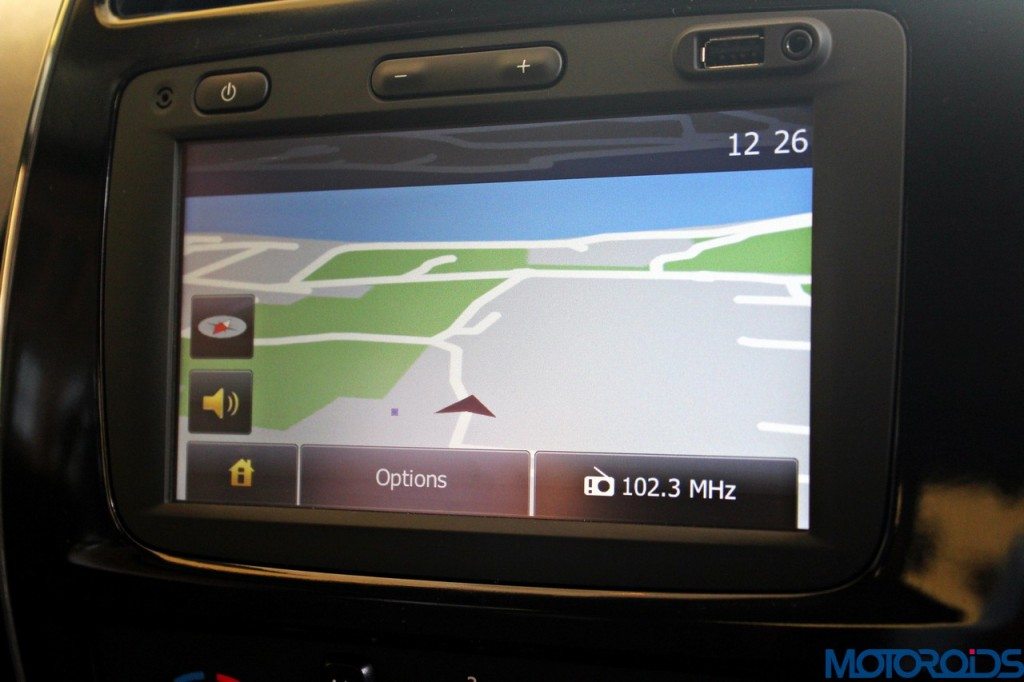

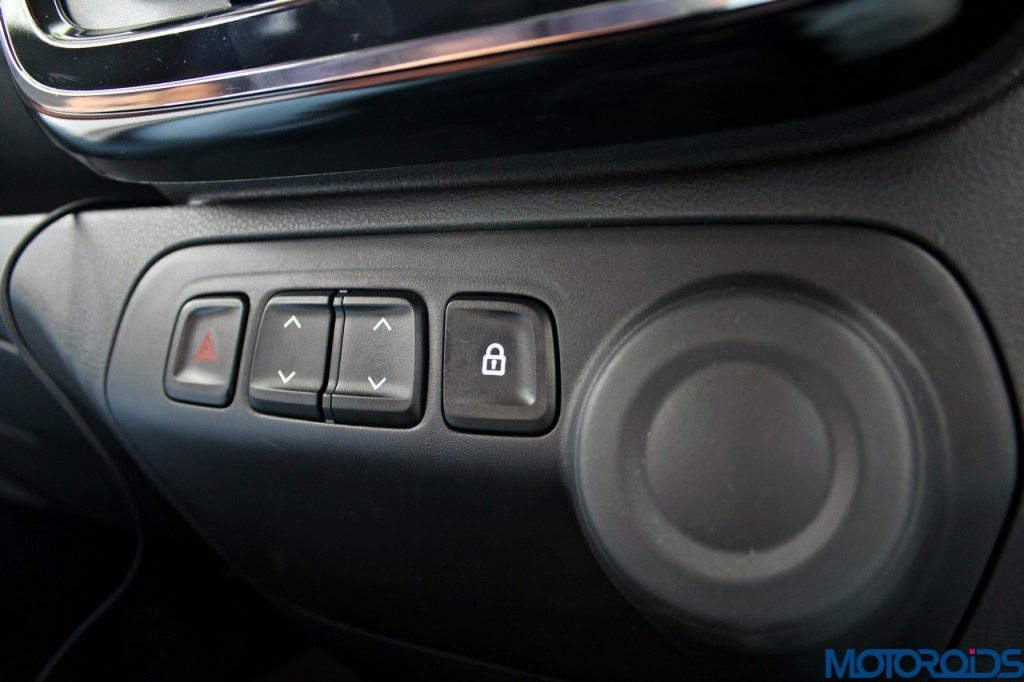
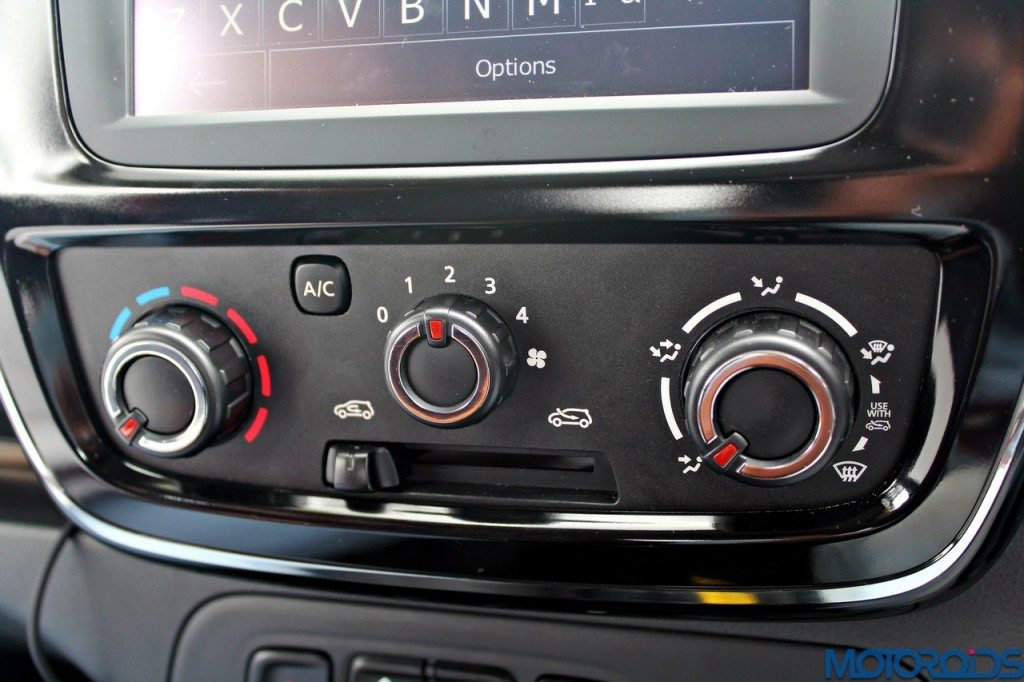
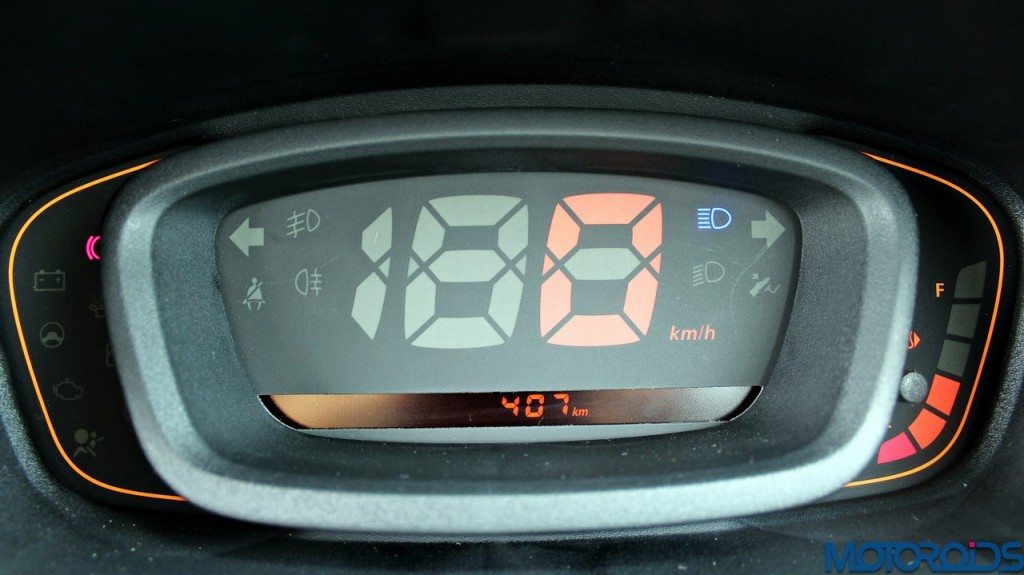
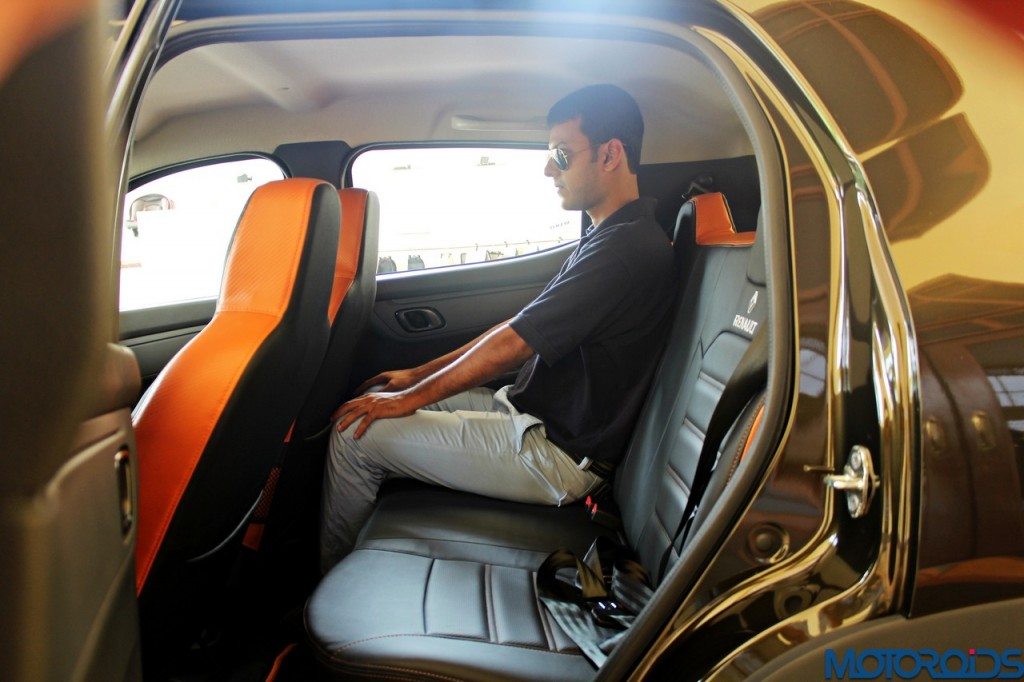
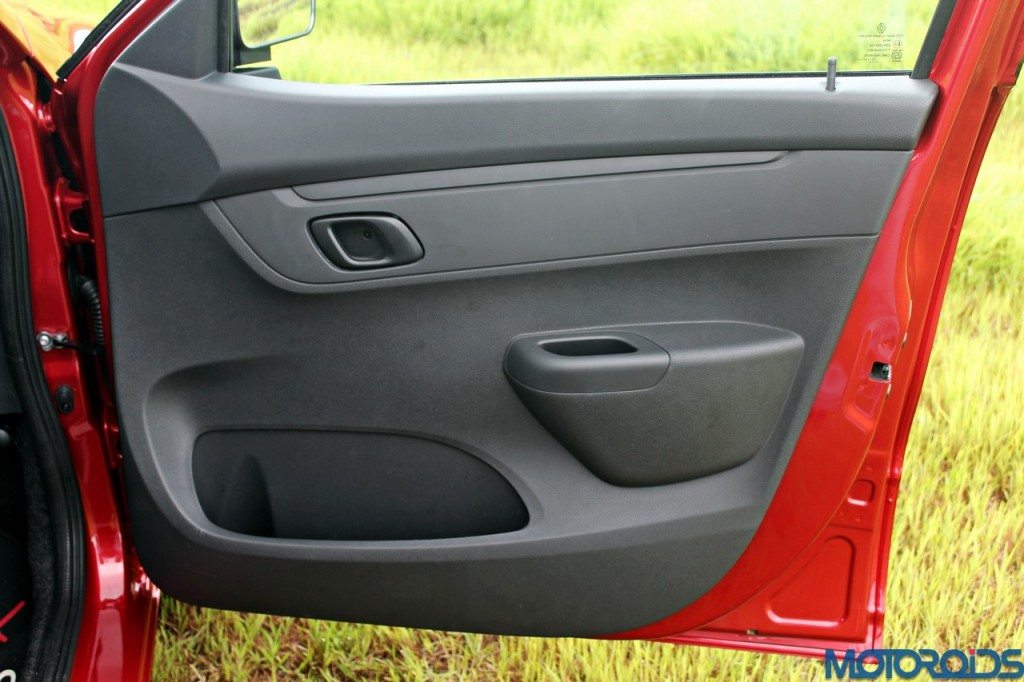
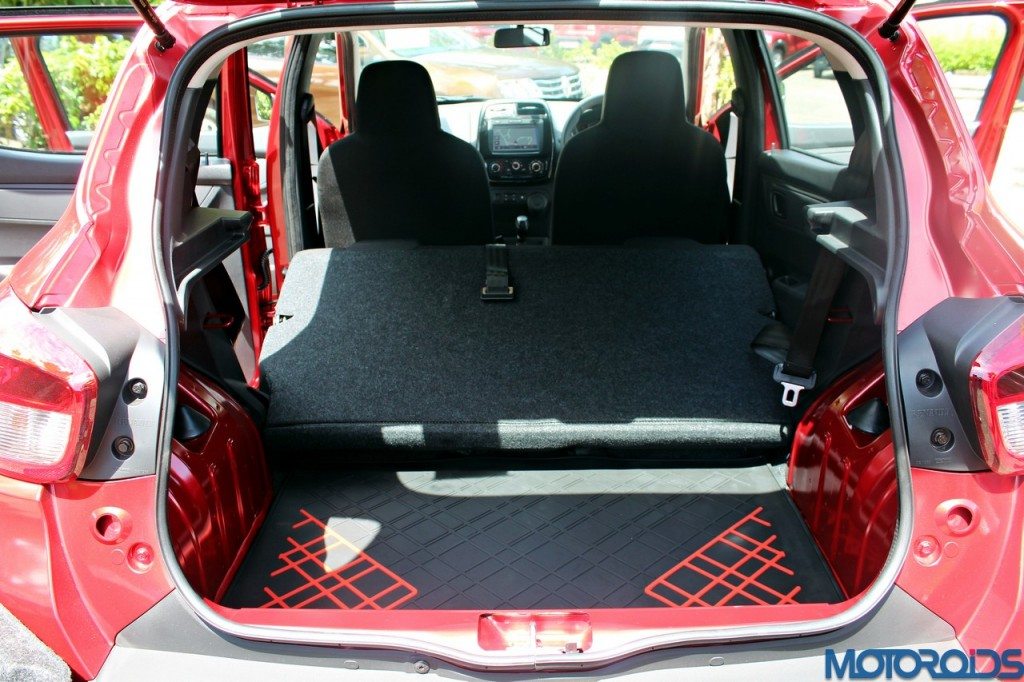
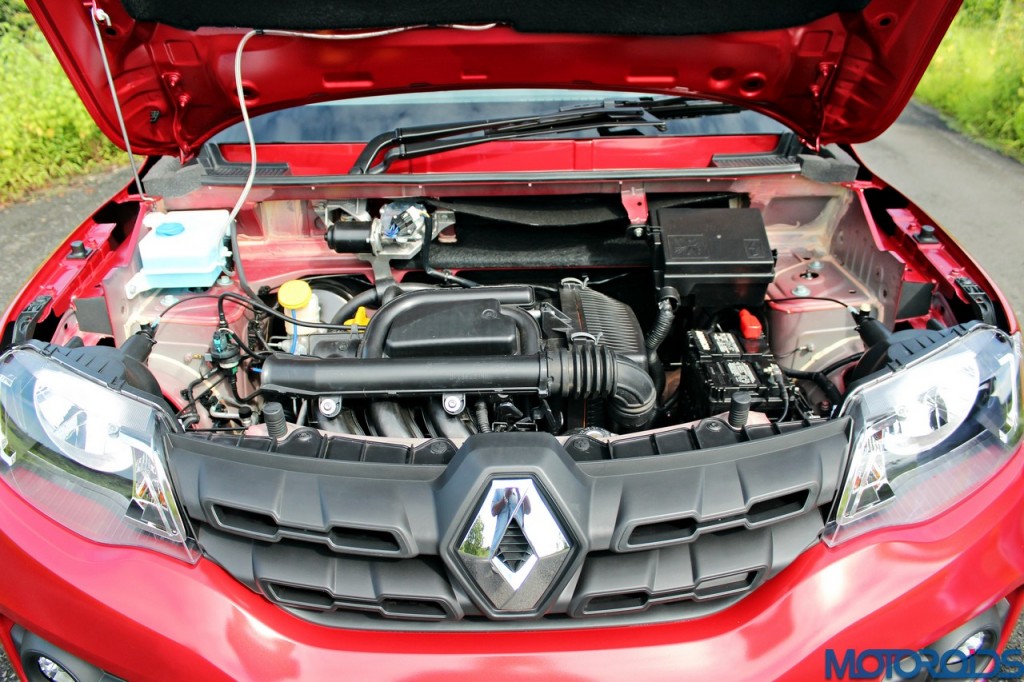
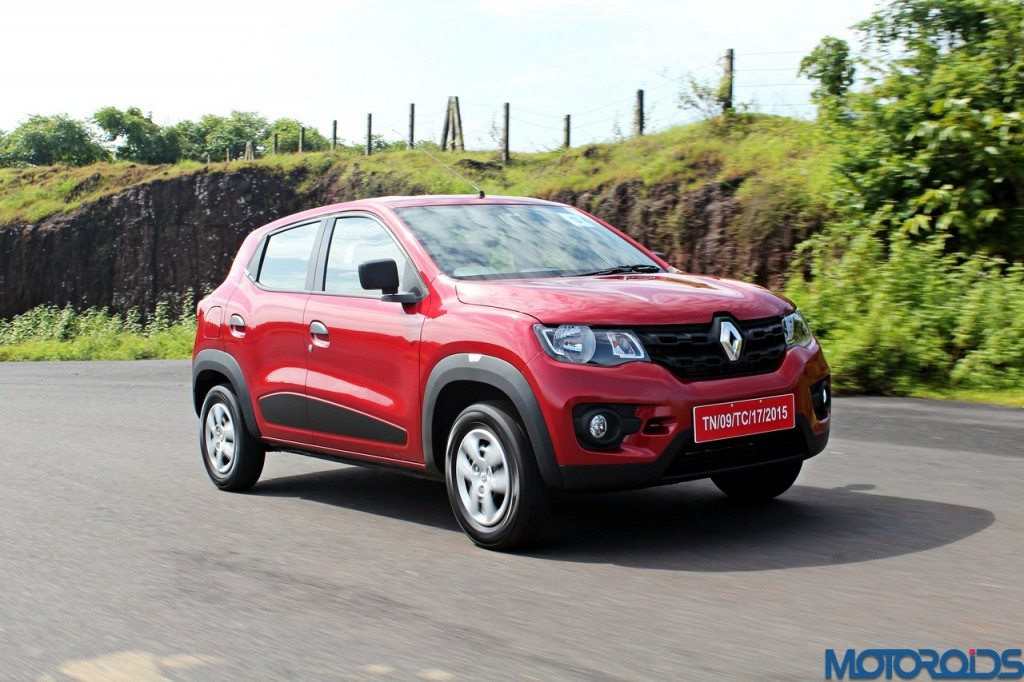
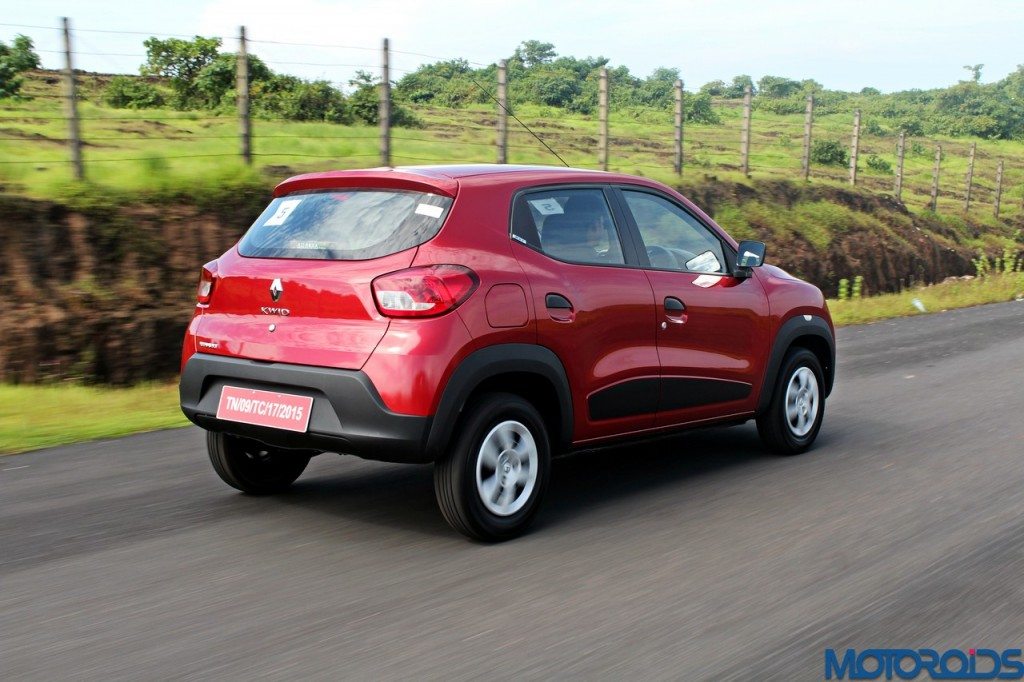
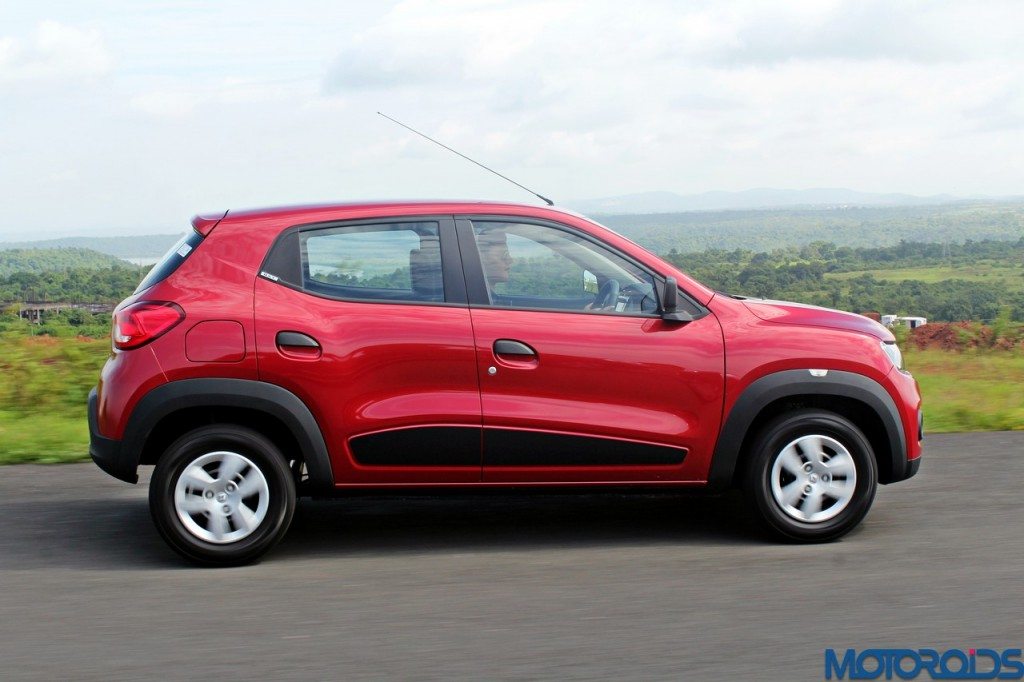
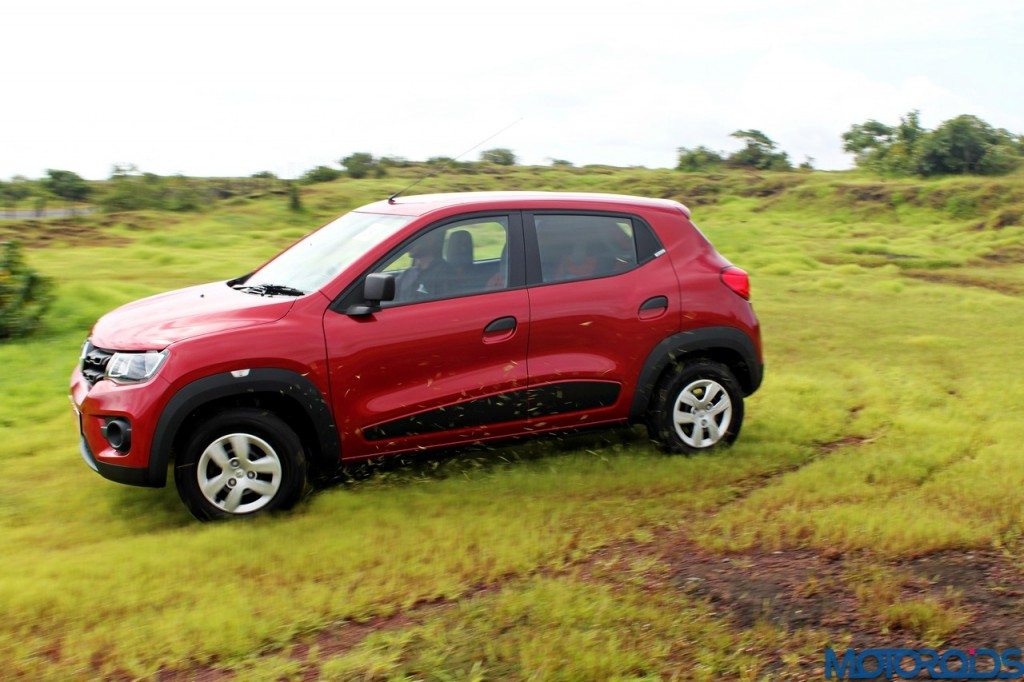
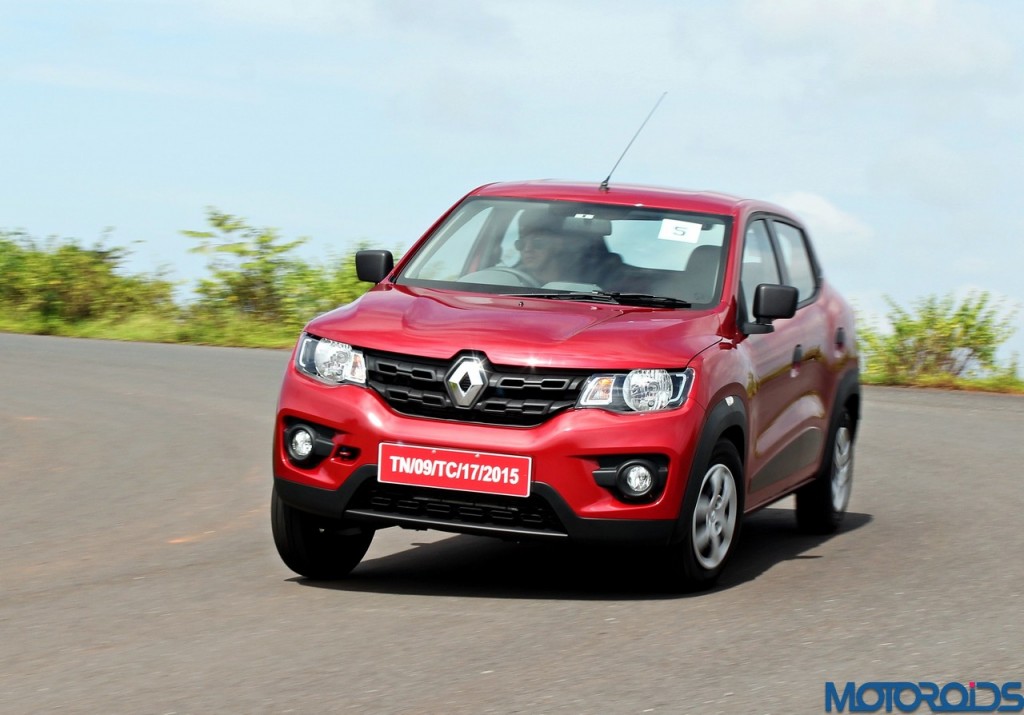
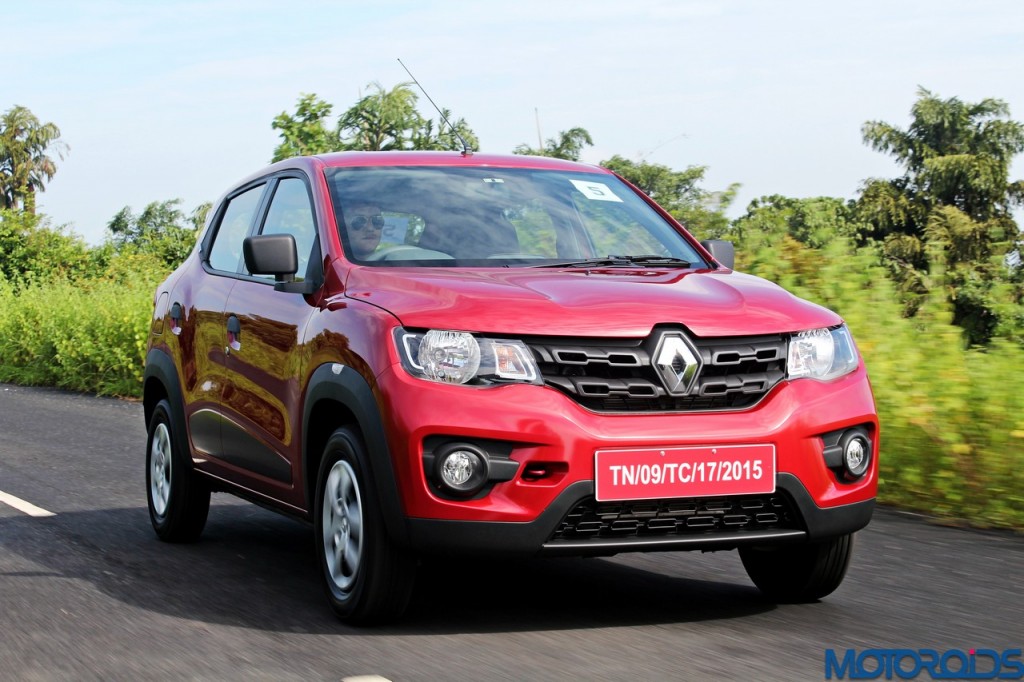
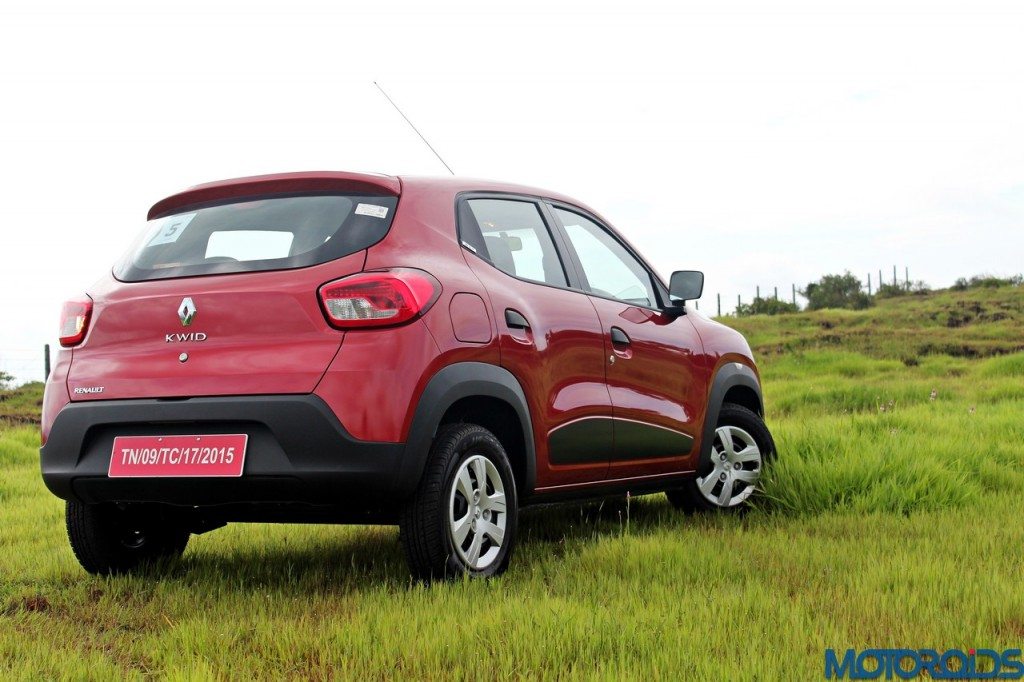

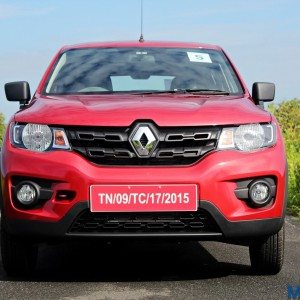

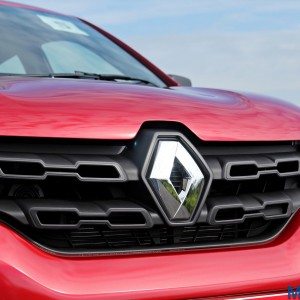

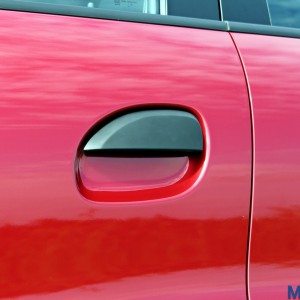


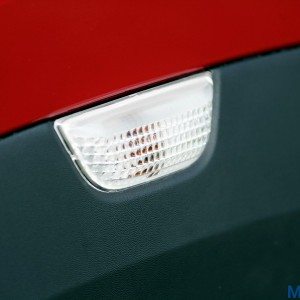
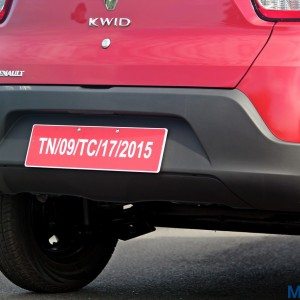
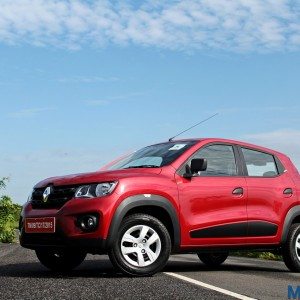

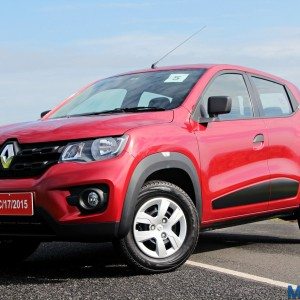

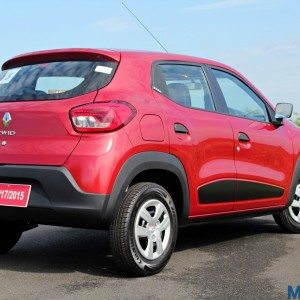
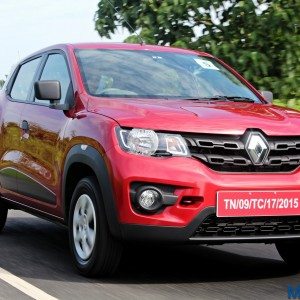
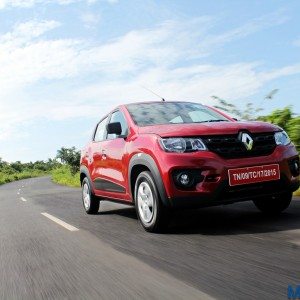
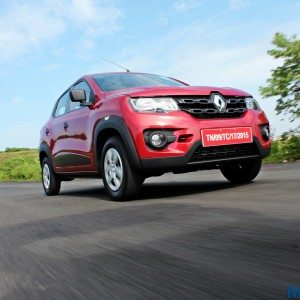


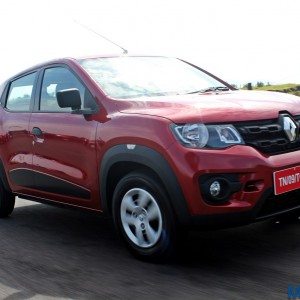
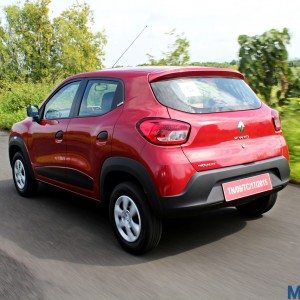
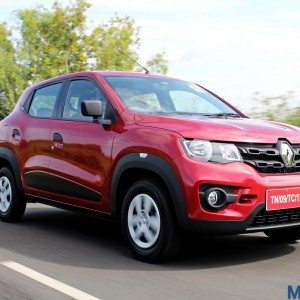
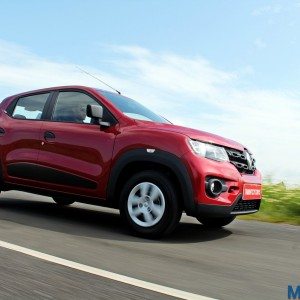
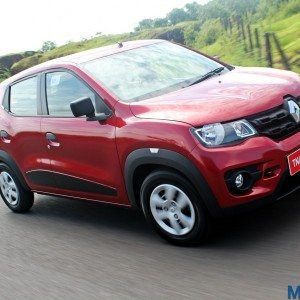
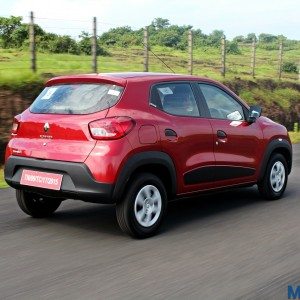
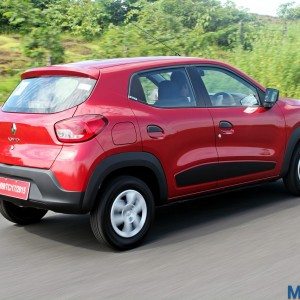
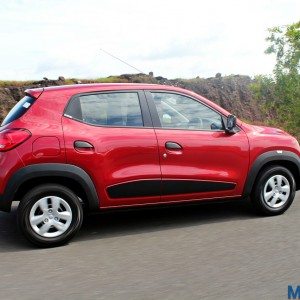
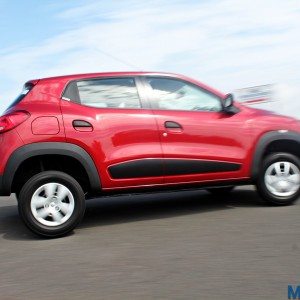
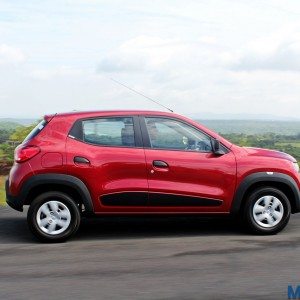
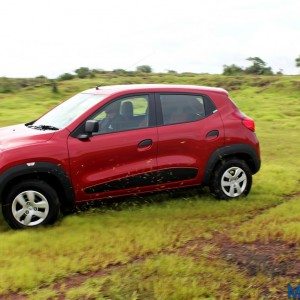


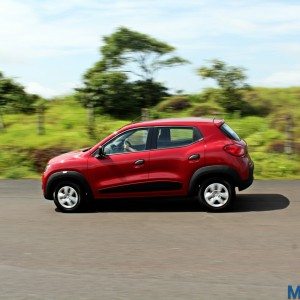

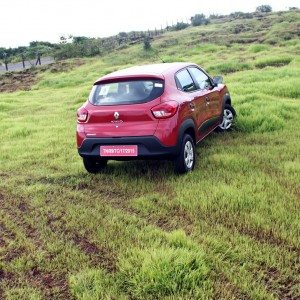
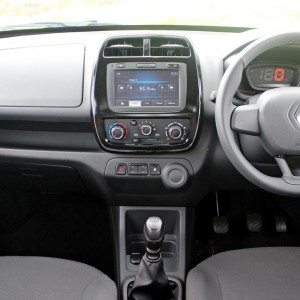
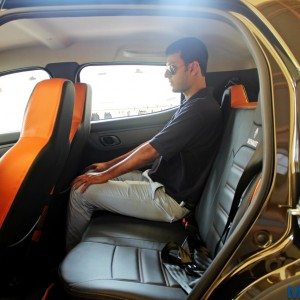
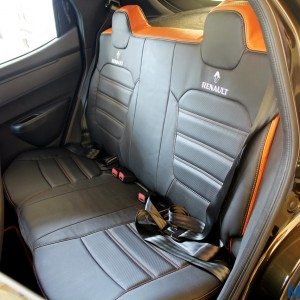


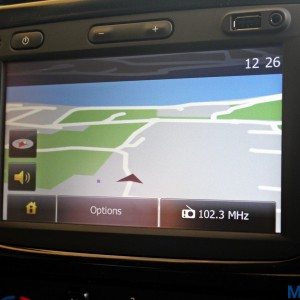

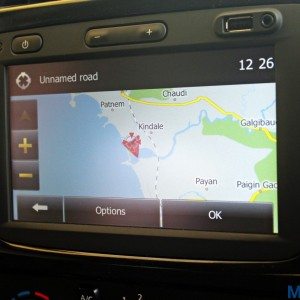
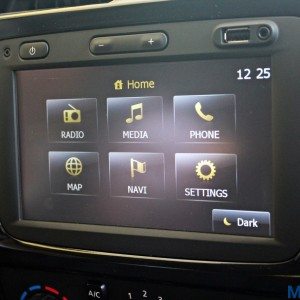

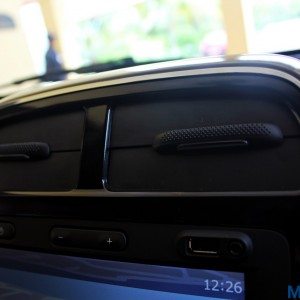
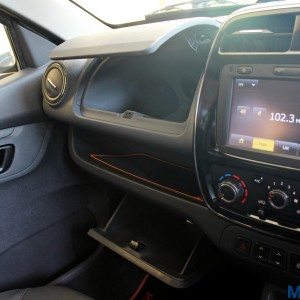
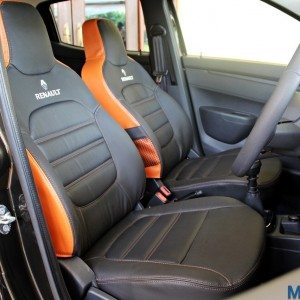
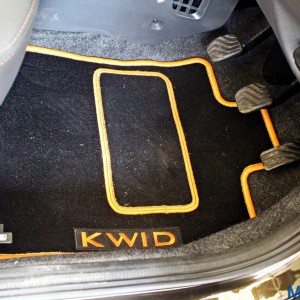


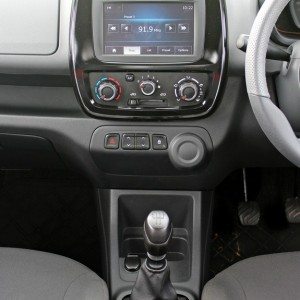
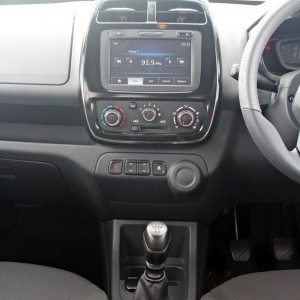

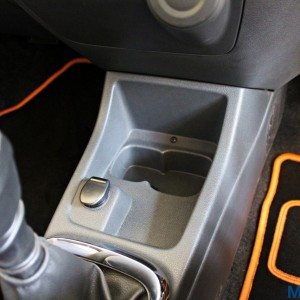
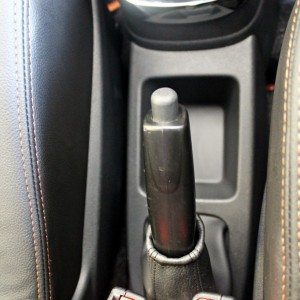
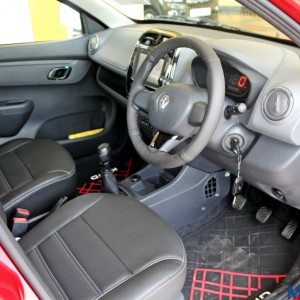
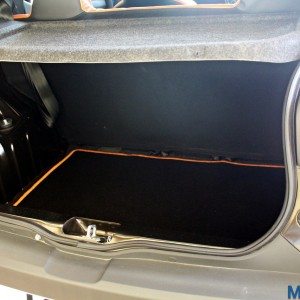
Good article. Detailed explanation about the car with comparison of same range cars.
This one is honestly good product which doesn't feel like a Cave on wheels when it comes to equipment. Just one thing, those overtly large wheel arches make the wheels looks like some one fitted it with a trolley wheels. This looks to be a promising car. Hope it can fair better then Datsun Go.
Aswm Looking I lv this care… But it is good for mounting area like Shimla ??
Good article,worth buying ok when does the booking starts
Very cool and detailed review. Really the small wonder of the entry level hatchbacks. I knew about most of the features on offer but really didn't know about keyless entry. Man have they done a good job with this car! 300 lts of boot space and a premium looking interior add to the benefits even in such an economic pricing. They might just reach really near to their target of 5% market share in the coming year.